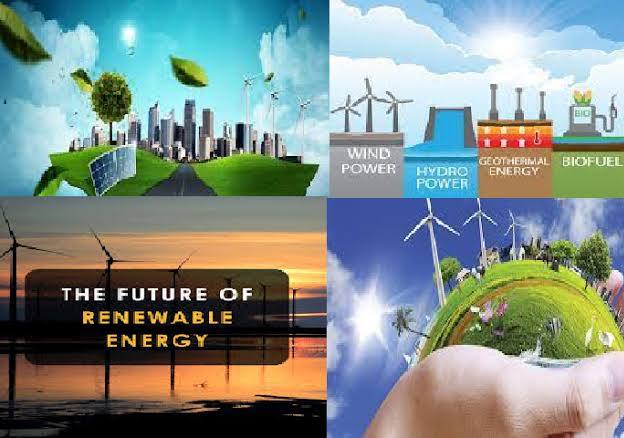The Future of Renewable Energy Technology

The future of renewable energy is bright, with projected annual growth of 8.50% and a market value expected to exceed $2.18 trillion by 2032, driven by advancements in solar, wind, geothermal, and green hydrogen technologies, coupled with smart grids and energy storage. Key trends include improving battery and smart grid technologies to address intermittency, expanding offshore wind farms, developing advanced solar panels and geothermal systems, and creating green hydrogen to replace fossil fuels. Governments and industries are investing heavily to promote clean energy, aiming to reach 90% of global electricity from renewables by 2050 to combat climate change and ensure sustainable, reliable energy access worldwide.
As the world faces the dual challenges of climate change and energy security, renewable energy is at the center of the global transition toward a sustainable future. Solar panels, wind turbines, hydropower, and bioenergy are no longer alternatives — they are becoming primary energy sources. The future of renewable energy lies not only in scaling these technologies but also in innovating smarter, cleaner, and more efficient solutions.
Key Drivers and Trends
- Technological Innovation: Ongoing research and development in solar panels, wind turbines, and geothermal systems are increasing efficiency and reducing costs.
- Energy Storage: Advanced battery technologies and grid-scale storage are crucial for addressing the intermittent nature of solar and wind power, ensuring a consistent and reliable supply.
- Smart Grids: Digital sensors, AI algorithms, and smart grid management systems are improving energy efficiency and integration, making the grid more resilient and optimized.
- Green Hydrogen: The production and utilization of green hydrogen, generated using renewable energy, offer a versatile solution to decarbonize hard-to-abate sectors like transportation and heavy industry.
- Emerging Markets: The growth of clean energy in emerging economies and the global push for energy independence are significant drivers for increased renewable energy adoption.
1. Advanced Solar Power
High-Efficiency Solar Panels: Emerging perovskite solar cells promise efficiency rates above 30%, making solar more cost-effective.
Floating Solar Farms: Built on lakes and reservoirs, they save land space and reduce water evaporation.
Solar Integration: Solar windows, roads, and building materials will turn infrastructure into power generators.
2. Next-Generation Wind Energy
Offshore Wind Farms: Floating turbines allow energy capture in deeper waters with stronger, steadier winds.

Vertical Axis Wind Turbines: Compact and urban-friendly designs could bring wind power to cities.
Hybrid Systems: Combining wind and solar for uninterrupted energy generation.
3. Energy Storage Innovations
One of the biggest challenges in renewable energy is intermittency — solar and wind are not always available.
- Advanced Batteries: Lithium-silicon, solid-state, and sodium-ion batteries could outperform today’s lithium-ion technology.
- Hydrogen Storage: Surplus renewable energy can be stored as hydrogen for use in fuel cells.
- Grid-Scale Storage: Massive storage systems balance supply and demand for stable electricity networks.
4. Smart Grids & Digitalization

AI-Powered Grids: Artificial intelligence optimizes energy flow and predicts demand.
Blockchain for Energy Trading: Decentralized systems allow consumers to sell excess renewable power directly.
IoT Integration: Smart meters and connected devices improve efficiency in homes and industries.
5. Emerging Renewable Sources
- Wave & Tidal Energy: Harnessing ocean currents as a stable power source.
- Geothermal Advances: Enhanced geothermal systems (EGS) expand energy access beyond volcanic regions.
- Bioenergy 2.0: Sustainable biofuels and waste-to-energy plants reduce carbon emissions.
6. The Role of Policy & Investment
The future of renewable energy depends not only on technology but also on government support, financing, and public adoption.
Private Sector Leadership: Tech giants and energy companies are investing heavily in renewables.
Incentives & Subsidies: Encourage clean energy adoption and innovation.
Global Collaboration: Sharing research and resources accelerates progress.
7. The Road Ahead

- By 2050, renewables could provide over 70% of global electricity.
- Costs of solar and wind are expected to continue falling, making them more accessible.
- Integration with AI, robotics, and smart grids will make renewable energy smarter and more resilient.
The future of renewable energy technology is bright, innovative, and essential. From high-efficiency solar panels to hydrogen storage and ocean power, the energy landscape is undergoing a historic transformation. The combination of technology, policy, and human willpower will determine how quickly we can achieve a sustainable, carbon-free world.
Impact and Future Vision
- Climate Change Mitigation: Renewable energy sources produce minimal to no greenhouse gases, playing a critical role in combating climate change.

- Sustainable Development: Their abundance and replenishable nature ensure a sustainable energy supply for future generations.
- Global Energy Transition: The International Renewable Energy Agency (IRENA) estimates that 90% of the world’s electricity can come from renewable sources by 2050
